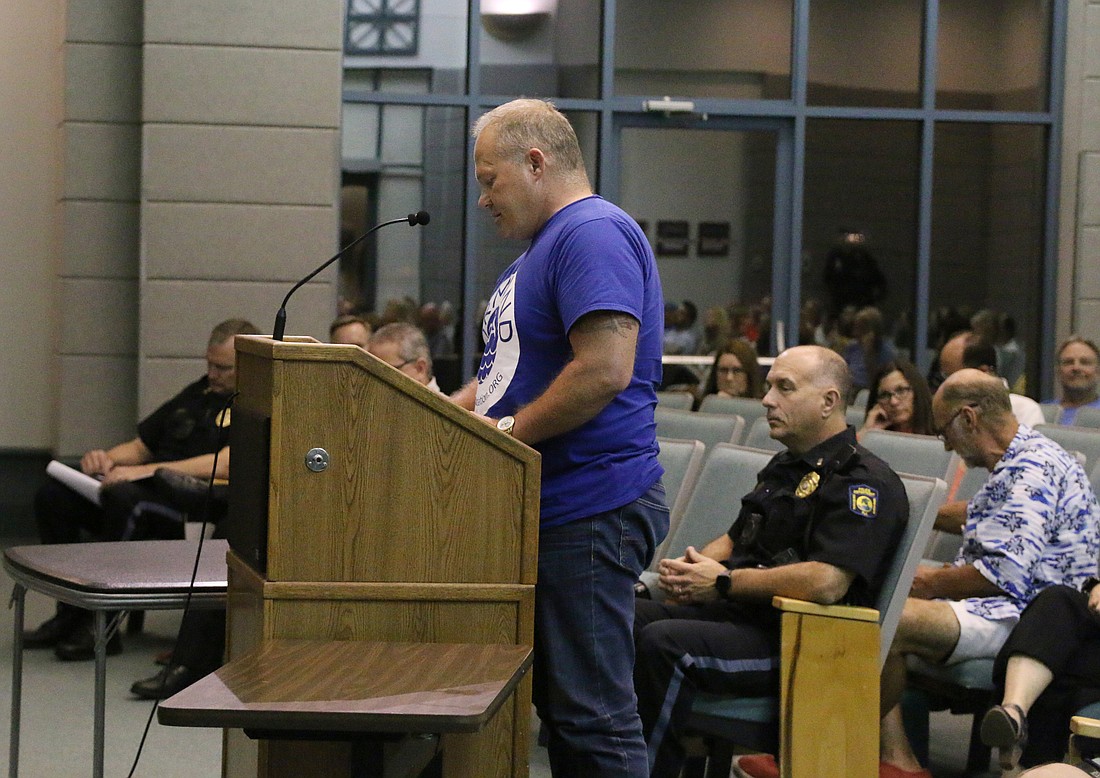- April 19, 2024
-
-
Loading

Loading

Ormond-by-the-Sea could get a study on septic tanks after all.
The Ormond Beach City Commission unanimously passed a motion directing city staff to bring back options to address the science behind the septic-to-sewer conversion in the north peninsula. The motion also halts the current design process of the first phase consisting of 700 homes from Plaza Drive to Longwood Drive, and, asks that alternative environmental projects be identified for completion.
"Our commitment to helping address environmental issues remains firm, but Ormond Beach can make strides in other ways to achieve this in the immediate future while gathering the additional information on septic-to-sewer and deciding where to go when we have that scientific data," Mayor Bill Partington said.
Five people spoke regarding a study at the commission meeting on Tuesday, Nov. 5, four of whom were in favor. Several of the residents had already spoken at the County Council meeting earlier in the day, and they presented a petition for a study to both government entities with 1,035 signatures.
Ormond-by-the-Sea resident Rashida Hakeem said she was pleased Commissioner Dwight Selby announced he would be recommending the city do a study on the north peninsula's septic tanks during a recent coffee event hosted by the Daytona Beach News-Journal at Alfie's Restaurant. While detecting levels of nitrogen and phosphorous in water is relatively easy, she said, determining their source is not.
"Clearly we need soil testing of the septic systems of Ormond-by-the-Sea to determine to what degree, if any, they are contributing to nutrient pollution of the Halifax and Tomoka Basin," Hakeem said.
Mary Anne Connors, former deputy county manager, used an old car to illustrate the need for a conversion. When something is "old and substandard," it's a problem, she said, per the nature of infrastructure.
Septic impacts have been documented throughout the state of Florida, and she said Ormond-by-the-Sea is no different. If the city offered 100 free sewer connections at the meeting, she suspected there would be some takers in the audience since the biggest objection by the north peninsula is the cost.
"There is no scenario in which thousands of old septic tanks on small lots are suitable for a barrier island," Connors said.
Partington said over the last several weeks, he's heard from many Ormond-by-the-Sea residents. This commission has made the local environment a priority, Partington said, and, that they believe its their role to assist in addressing issues causing nitrogen and phosphorous in the water, which can lead to algae blooms.
"I think everybody can agree we don't want that, and we need to find what the cause is of those things," he said.
Selby, who has been at the forefront of the septic-to-sewer conversion in the north peninsula since the beginning, supported pursuing a study. While the vast majority of the most vocal are against the conversion, Selby said there are many in the north peninsula that support the project in silence.
He said the "opposition" has created fear in the community and passed along a "tremendous amount of misinformation" when they list costs between $10,000-$30,000 to hook up. Selby wouldn't support it if the cost was that high.
Selby also addressed two points regarding the city's wastewater treatment plant: No effluent is discharged into the Tomoka River and the city has never discharged raw sewer into the Halifax River.
He proposed the city enact a moratorium on all septic tanks in new construction within city limits (The Toscana neighborhood off Old Dixie Highway is under county jurisdiction). In addition to that, Selby said he wanted to reduce the amount of effluent that currently goes into the river, perhaps with increased storage at the wastewater treatment plant.
"It's all our water, and together, we can help solve this problem," Selby said. "We can move in the direction we want to move."
Could they have done this differently? Yes, Selby agreed. But this is where the city is at now.
One consequence of halting all septic-to-sewer in the north peninsula is that the conversion 65 homes on septic in Oak Avenue, Magnolia Avenue and Bonita Place in Ormond Beach has also come to a full-stop.
At least one commissioner will vote no on the study — City Commissioner Troy Kent.
Over the last few weeks, he's been wondering why the city ever took on this project when the residents of the north peninsula don't want it. He said he supported the motion because "it stops intruding into [Ormond-by-the-Sea residents'] privacy."
"We need to get our own house in order first," Kent said. "We need to get our own residents — all of them — off septic before we introduce this into other jurisdictions."
This story was updated at 11:26 a.m., Wednesday, Nov. 6, to correct the spelling of Ormond-by-the-Sea resident Rashida Hakeem's name.